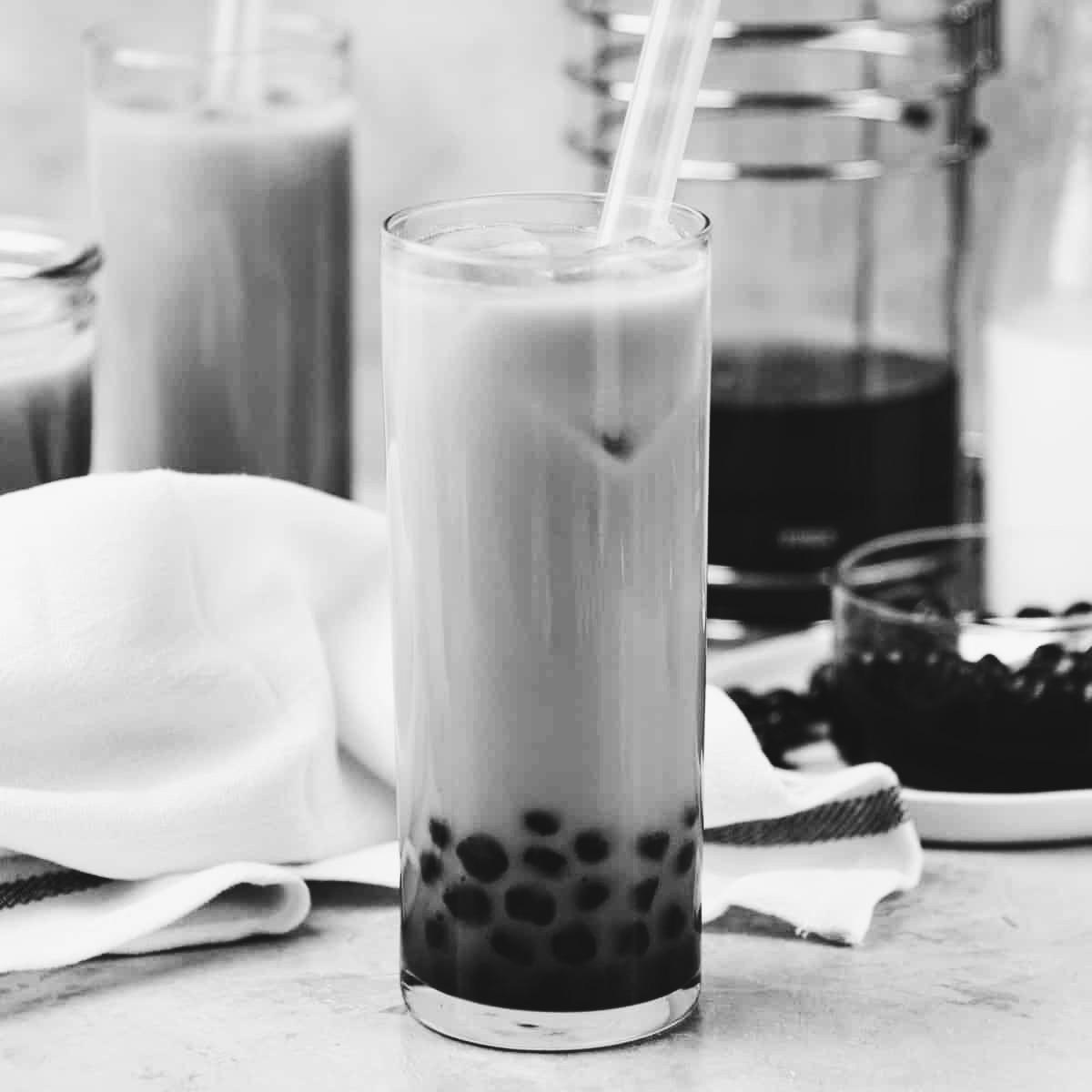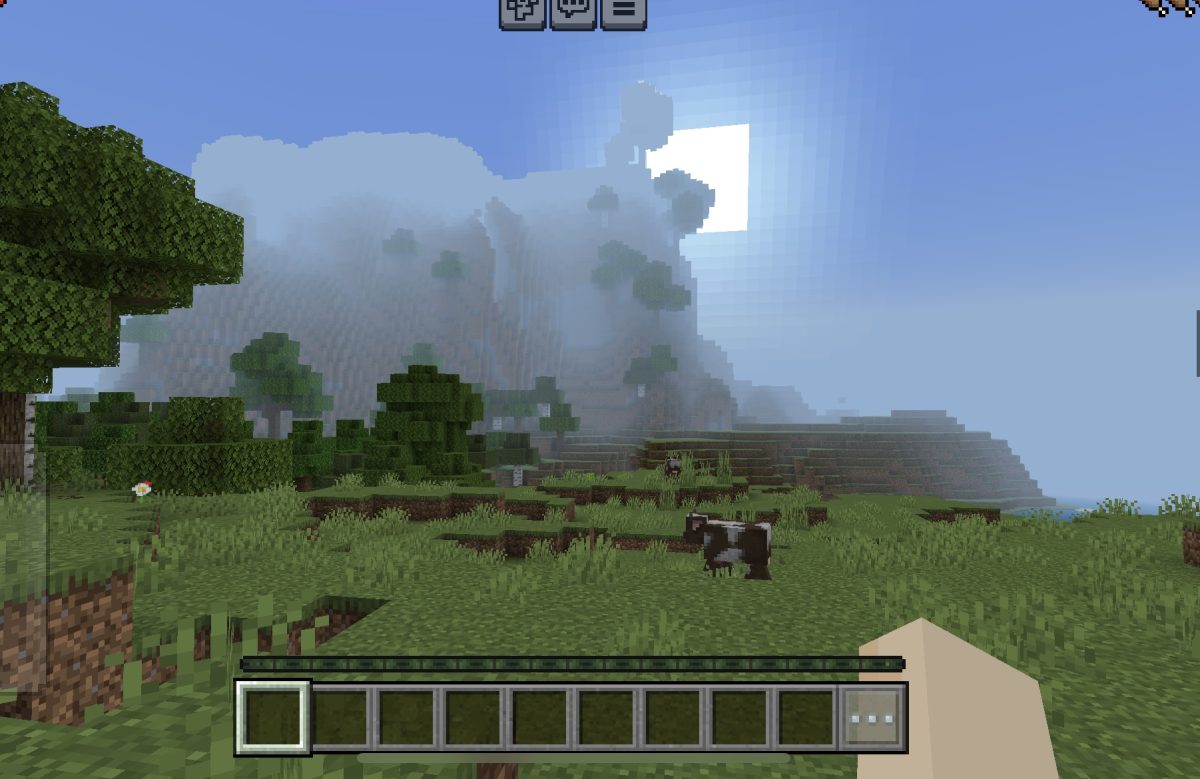By Kaiya Suehiro | Staff Writer

When my sister asked for tapioca flour for her birthday, my dad and I got her a five-pound bag of Anthony’s Organic Tapioca Flour.
It was June and in the middle of a global pandemic, so we tried to avoid going out whenever possible and Keni missed being able to get boba. She decided to make her own. There are instant boba kits, but my sister is an overachiever and wanted to make everything from scratch. She found a recipe from Inga Lam on YouTube that seemed fairly simple.
The only ingredients were tapioca starch, brown sugar, and water. We did not have tapioca starch so we bought some. The flour was fine, pure white in color, and extremely soft. It is what creates boba’s chewy texture.
Keni was in charge, but I helped her slowly combine the ingredients on the stove. Our first attempt to make the dough produced a brown, oobleck-like substance. In our efforts to make food, we had somehow created a Dr. Seuss science experiment. It eventually dried out and crumbled to pieces so we started a second batch.
The second mixture looked like dark caramel and made the air smell of burnt sugar. The middle of the boba pearls were dry and powdery after we boiled them. We ate a few and decided to make adjustments.
We were starting to get worn out because this was our third attempt of the day. Keni didn’t want to give up and promised, “third time’s the charm.” Perseverance led to better results, and we were able to create a successful batch.
The pearls were a light, golden brown. They were translucent and almost glowed when a spoonful was held to the light. I placed them on my tongue and they were warm and lightly coated with brown sugar syrup. I liked that the pearls were smaller and less tough than the ones from the shops.
We were confused because the boba tasted like cinnamon, but quickly decided after the initial shock that the taste was enjoyable. It was unique and accidentally innovative because we had never had cinnamon boba before. We eventually figured out that the sugar that we used for this batch was actually leftovers from a brown sugar and cinnamon mixture that our grandma had made for an apple crumble.
The easiest part was making the drink to put the boba in. Keni has an assortment of teas and honey that she collects. The boba was served with cold milk tea made by brewing black tea in milk, and we were able to reduce the sugar levels of the drink to match our preferences. It had a delicate flavor and tasted less artificial.
Our cousins came to our backyard to sample the boba. They claimed that homemade boba is better than store-bought. Our uncle seemed to enjoy it too and showed his appreciation by getting my sister two more bags of Anthony’s Tapioca Flour. Later, we made a second successful batch with matcha flavored boba and iced green tea.
“I would make it again and then we could experiment with even more flavors of boba,” Keni suggested.
In my experience, homemade boba is difficult to make but extremely rewarding to consume. It is time-consuming and requires more effort than purchasing from a shop, so we will still buy boba drinks for convenience. Despite this, I would recommend making it at home to boba-lovers who want to try something new. It is a unique activity and can increase appreciation for boba by creating an appreciation for the art of creating it.
Brown sugar boba
“25g brown sugar (2 tbsp) (dark brown sugar/dark muscovado sugar)
30ml water (2 tbsp)
Tapioca starch 45 g (6 tbsp) + extra for dusting
Ingredients for brown sugar syrup:
50g brown sugar (1/4 cup)
40g water
1. Combine brown sugar and water in a saucepan and heat until sugar has melted.
2. Remove from heat and add 1 tbsp of tapioca starch into brown sugar mixture, stirring continuously. Once dissolved, return to heat and cook until slightly thickened.
3. Remove saucepan from heat and add in rest of tapioca starch, mixing until roughly combined (it will be lumpy and that’s okay).
4. Dust work surface with tapioca flour and roll out dough. Continuously knead dough until smooth and round.
5. Roll dough out into a log shape and cut into 3 sections. Keep the other two sections wrapped while working on the first.
6. Roll the dough out until roughly 0.5/0.6 inch thick and cut into smaller, individual pieces. Roll each piece into a ball shape and set aside with a light dusting of tapioca flour. Repeat with remaining dough. Work fast for these steps since the dough will become harder and more crumbly as it loses its heat!
7. Cook boba in boiling water. Once all boba float to the surface, lower the heat to low and keep cooking for 15 minutes. Turn off heat and cover with lid, letting boba sit for another 10 – 15 minutes.
8. Drain boba and rinse with cold, ice water.
9. Melt brown sugar and water in a separate pot and add boba. Cook until syrup has thickened.
10. Serve immediately”
Recipe from Inga Lam
To make milk tea, simply make black tea with milk instead of water.






